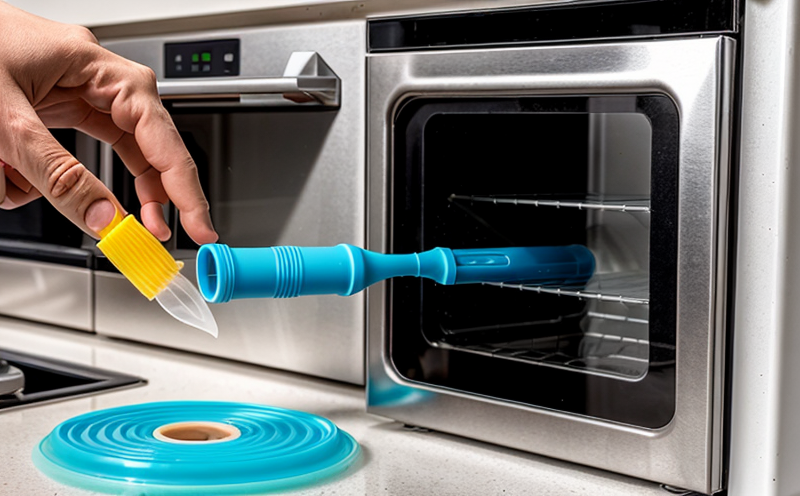ISO 4892 Accelerated Weathering Testing of Household Plastics
The ISO 4892-3 standard specifies the methods for determining the resistance to weathering by exposure to artificial light, primarily xenon arcs, under controlled conditions. This accelerated weathering testing is crucial in evaluating the durability and longevity of household plastics, which are subjected to various environmental stresses such as ultraviolet (UV) radiation, heat, humidity, and oxidative aging.
Household plastics are widely used in everyday products like furniture, kitchenware, toys, and outdoor items. The accelerated weathering test simulates real-world conditions that these materials encounter over a much shorter period to predict long-term performance. This testing is particularly important for manufacturers who aim to ensure their products meet quality standards, comply with regulations, and offer durability to consumers.
The testing process involves exposing plastic specimens to a high-intensity light source that mimics the effects of sunlight. The exposure time and intensity can be adjusted based on the specific requirements of the material being tested. Specimens are typically exposed for periods ranging from 24 to 1,000 hours, depending on the desired outcome.
Testing in accordance with ISO 4892-3 helps manufacturers identify potential degradation issues early in the product development cycle. This allows them to make necessary adjustments and improvements before products reach the market. Compliance with this standard ensures that household plastics meet international quality standards and are fit for purpose, reducing the risk of premature failure.
Accurate specimen preparation is critical for reliable results. This includes ensuring specimens are representative of the end product in terms of size, shape, and thickness. Specimens should be cut from larger samples to maintain homogeneity across all test replicates.
| Test Parameter | Description |
|---|---|
| Light Source | Xenon arc lamps emitting ultraviolet, visible light, and infrared radiation. |
| Exposure Time | Duration of exposure to the artificial light source. Ranges from 24 hours up to 1,000 hours depending on material type. |
| Environmental Conditions | Temperature and humidity levels that simulate real-world conditions during testing. |
The ISO 4892-3 test method is widely used in the polymer & plastics sector, providing a standardized approach to evaluate the aging resistance of household plastics. This ensures consistency across different manufacturers and regions, facilitating international trade and compliance with global standards.
- Identifies potential issues early in the product lifecycle
- Promotes consistent quality across products
- Aids in regulatory compliance
- Enhances consumer satisfaction by ensuring durable products
Industry Applications
The ISO 4892-3 accelerated weathering test is applicable to a wide range of household plastics used in everyday items. These include:
- Furniture: Chairs, tables, and outdoor furniture made from PVC or polyethylene.
- Kitchenware: Cutlery, bowls, and storage containers typically made from polypropylene or polycarbonate.
- Toys: Plush toys and educational items often fabricated from soft plastics like PVC or rubberized materials.
| Material | Applications |
|---|---|
| Polyvinyl Chloride (PVC) | Furniture, flooring, and toys |
| Polyethylene (PE) | Bags, films, and packaging materials |
| Polycarbonate (PC) | Bottles, eyewear frames, and electronic enclosures |
The test is particularly useful for manufacturers who need to ensure that their products can withstand exposure to sunlight without losing their original color or mechanical properties. This testing helps in optimizing the choice of raw materials and production processes.
Environmental and Sustainability Contributions
The ISO 4892-3 accelerated weathering test supports environmental sustainability by helping manufacturers develop products that are more durable, reducing waste and the need for frequent replacements. By ensuring household plastics can withstand harsh environmental conditions, this testing contributes to longer product lifecycles, which in turn reduces landfill waste.
The test also aids in the development of environmentally friendly materials. For instance, it helps in identifying how biodegradable or recyclable plastics perform under accelerated weathering conditions. This information is crucial for sustainable product design and lifecycle management.
Compliance with ISO 4892-3 ensures that products meet international standards, promoting fair trade practices across different markets. This reduces the risk of non-compliance issues and associated penalties, contributing to a more environmentally responsible industry.
Competitive Advantage and Market Impact
The ISO 4892-3 accelerated weathering test provides several competitive advantages for manufacturers in the polymer & plastics sector:
- Market Access: Compliance with international standards opens doors to global markets.
- Consumer Trust: Demonstrated durability enhances consumer confidence and brand reputation.
- Regulatory Compliance: Ensures adherence to local and international regulations, avoiding potential legal issues.
- Innovation: Identifies potential areas for improvement in product design and material selection.
The test also impacts the market by influencing consumer perceptions of product quality. Products that pass accelerated weathering tests are perceived as higher quality, which can lead to increased sales and market share.





